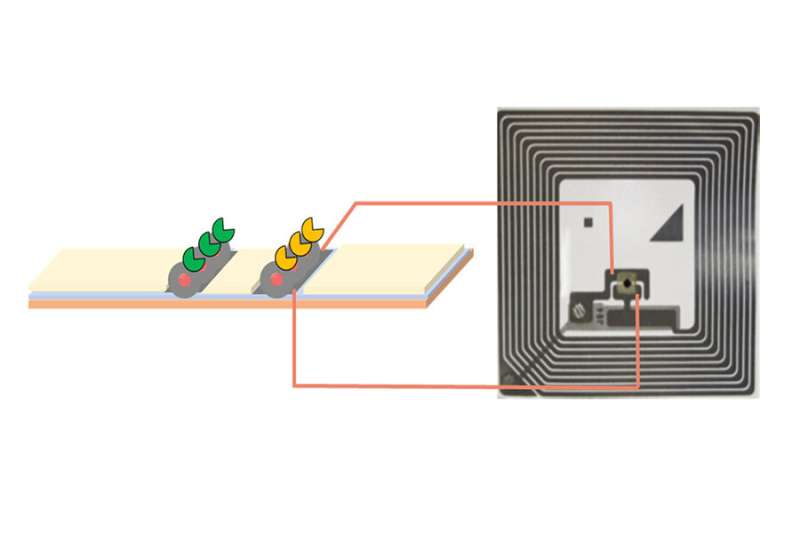Chemists develop a wireless electronic lateral flow assay test for biosensing

Lateral flow assays (LFA) tests have become ubiquitous within the general public; they are the format for standard home pregnancy and COVID-19 tests, indicating a positive result with a colored line, and a negative result with no colored line. In their current iteration, these tests are largely qualitative and binary in their outputs.
Various attempts to make a quantitative LFA have yielded complications due to the optical basis of a quantitative test—scattered stray light and faint images. Since COVID has catapulted LFAs into the daily lives of many, the impact of these tests will be even greater if they can be made intrinsically quantitative for the monitoring of key biomarkers associated with disease progression, medical treatments, and basic health monitoring.
In a paper published Aug. 17 in the Journal of the American Chemical Society, members of the lab of Professor Tim Swager, led by postdoc Jie Li and graduate student Weize Yuan, reveal the design for a new generation of LFA that uses conductivity (or resistivity) changes in an electronic polymer to create the response.
Electrical resistance (or conductance) is universal in electronic devices. It can be readily measured with great accuracy, and prior research has shown that the group's electronic LFAs have both intrinsic quantitative capabilities and ultra-high sensitivity. The approach of the MIT team generates base signals in which the resistance can change by 700,000 percent, and with these strong signals, can detect trace quantities of a target biomarker. The electronic-LFA uses a biological trigger employing the well-known enzyme glucose oxidase. It was shown to be able to monitor glucose, but this LFA is far more than a glucose meter.
This study shows that this technology can be applied to quantitatively detect target proteins by using antibodies designed to bind to them. In a preliminary demonstration of this feature, the researchers found that they were able to quantitatively detect the inflammation biomarker, the C-Reactive Protein, at physiological levels. This biomarker has elevated levels when a patient has an immune response to disease or a medical treatment. This can be extended readily with many other biomarkers, and there are plans in place to use it for detecting environmental toxins (metals and chemicals) in water.
When this electronic LFA is integrated into a resonant radio frequency circuit, users can power and read the device with a conventional smartphone. As a result, the passive LFA-RFID devices can be used at home without a specialized reader. With this in mind, electronic LFA has enormous potential in home health care diagnostics and environmental monitoring.
More information: Jie Li et al, Wireless Lateral Flow Device for Biosensing, Journal of the American Chemical Society (2022). DOI: 10.1021/jacs.2c06579
Journal information: Journal of the American Chemical Society
Provided by Massachusetts Institute of Technology
This story is republished courtesy of MIT News (web.mit.edu/newsoffice/), a popular site that covers news about MIT research, innovation and teaching.





















